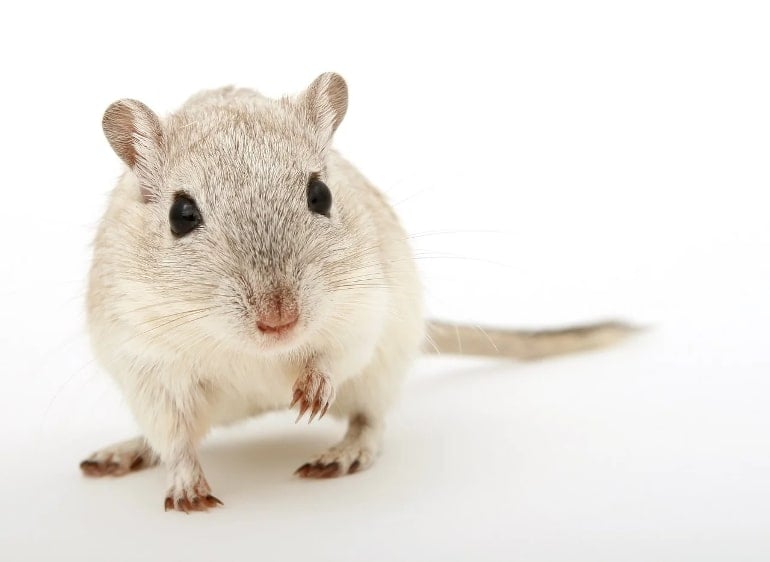Summary: Distinct, coordinated activity in large sets of neurons can predict the future behaviors of rats, a new study reports. Based on the findings, researchers have created a “dictionary” that links brain activity patterns to simple behavioral outcomes.
Source: University of Oregon
If behavior is a language, UO neuroscientist Luca Mazzucato is decoding its grammar.
Distinct, coordinated activity in large sets of neurons can predict a rat’s future behavior, he and his team showed in a new study. They created a dictionary that links brain activity patterns to simple actions. The finding helps them to understand how the brain decides the timing of future actions, and connects small actions into larger sequences.
He and his team reported their results October 29 in the journal Neuron.
“In this paper, we figured out what the laws were in the brain to create simple behavioral sequences,” Mazzucato said.
Every complex behavior is made up of a series of simpler actions, just as a sentence can be deconstructed into the strung-together syllables of words. While there’s flexibility in how those steps can be put together, there are also rules governing what combinations make sense and what don’t.
Take walking across a room, for instance. The pace of one’s steps might vary, but it would be unusual to see two left-foot steps in a row. Predicting complicated behaviors requires understanding this grammar—both the ways that behaviors are constrained, and the way they aren’t.
Mazzucato wants to figure out how what makes an animal decide to take a certain action at a specific time, and how that choice is represented in the brain.
He and his team, led by postdocs Stefano Recanatesi and Ulises Pereira, partnered up with neuroscientist Zachary Mainen at the Champalimaud Centre for the Unknown in Lisbon, Portugal. They set up an experiment in which they trained rats to poke their noses into a spot on the cage wall, and then move to another place in the cage to get a drink of water.
If the rats went for the reward immediately, they got a small sip; if they could wait for 10 or 20 seconds, they got more water. The rats’ series of actions were relatively fixed, but each animal could choose the timing.
While the rats were scurrying around, the researchers tracked the activity of large groups of neurons in a part of the brain called the motor cortex, which is involved in planning movements.

The rats’ future intentions were represented by the coordinated activity of large populations of neurons in the motor cortex, the researchers found. Each action created a distinct signature in the motor cortex, with a group of neurons behaving in a coordinated and consistent way. When a rat was getting ready to switch to a different action, the neural signature suddenly changed.
“For every action the animal was performing in the cage, we were able to understand what calculations the neurons were doing in that brain,” Mazzucato said. “We could predict what the animal would do a few hundred milliseconds before they did it .”
That is, they could distinguish between rats who were going to go for the reward immediately, versus those who were holding out for a bigger drink of water, just by looking at brain activity.
They could also replicate the variability of rats’ choices via a set of mathematical equations called a recurrent neural network, an example of brain-inspired artificial intelligence. “Now that we have a model, we can generalize it,” Mazzucato said.
Here, the team focused on just one behavioral variable, the timing of actions. But in the future, they hope to investigate similar questions around choice and decision-making in scenarios that more closely mimic the complexity of real life.
About this neuroscience research news
Author: Laurel Hamers
Source: University of Oregon
Contact: Laurel Hamers – University of Oregon
Image: The image is in the public domain
Original Research: Open access.
“Metastable attractors explain the variable timing of stable behavioral action sequences” by Stefano Recanatesi et al. Neuron
Abstract
Metastable attractors explain the variable timing of stable behavioral action sequences
Highlights
- Behavioral sequences in freely moving rats revealed large variability in action timing
- Actions were preceded by onset of specific neural patterns in secondary motor cortex
- Metastable attractors in a network model can explain the origin of timing variability
- Transitions between attractors are driven by low-dimensional correlated variability
Summary
The timing of self-initiated actions shows large variability even when they are executed in stable, well-learned sequences. Could this mix of reliability and stochasticity arise within the same neural circuit?
We trained rats to perform a stereotyped sequence of self-initiated actions and recorded neural ensemble activity in secondary motor cortex (M2), which is known to reflect trial-by-trial action-timing fluctuations.
Using hidden Markov models, we established a dictionary between activity patterns and actions. We then showed that metastable attractors, representing activity patterns with a reliable sequential structure and large transition timing variability, could be produced by reciprocally coupling a high-dimensional recurrent network and a low-dimensional feedforward one.
Transitions between attractors relied on correlated variability in this mesoscale feedback loop, predicting a specific structure of low-dimensional correlations that were empirically verified in M2 recordings.
Our results suggest a novel mesoscale network motif based on correlated variability supporting naturalistic animal behavior.






